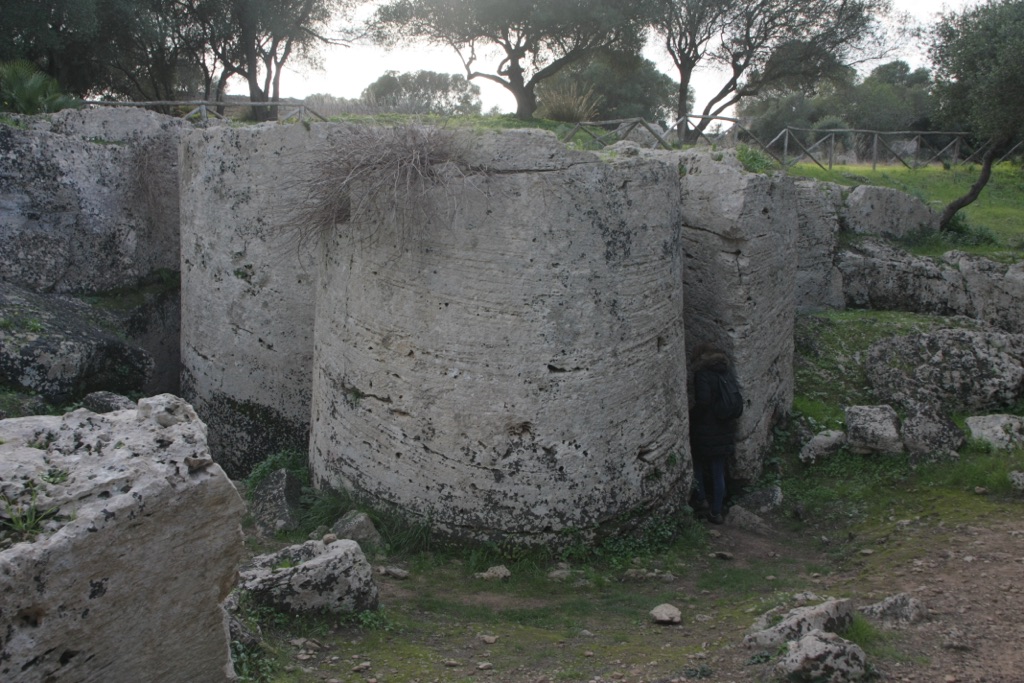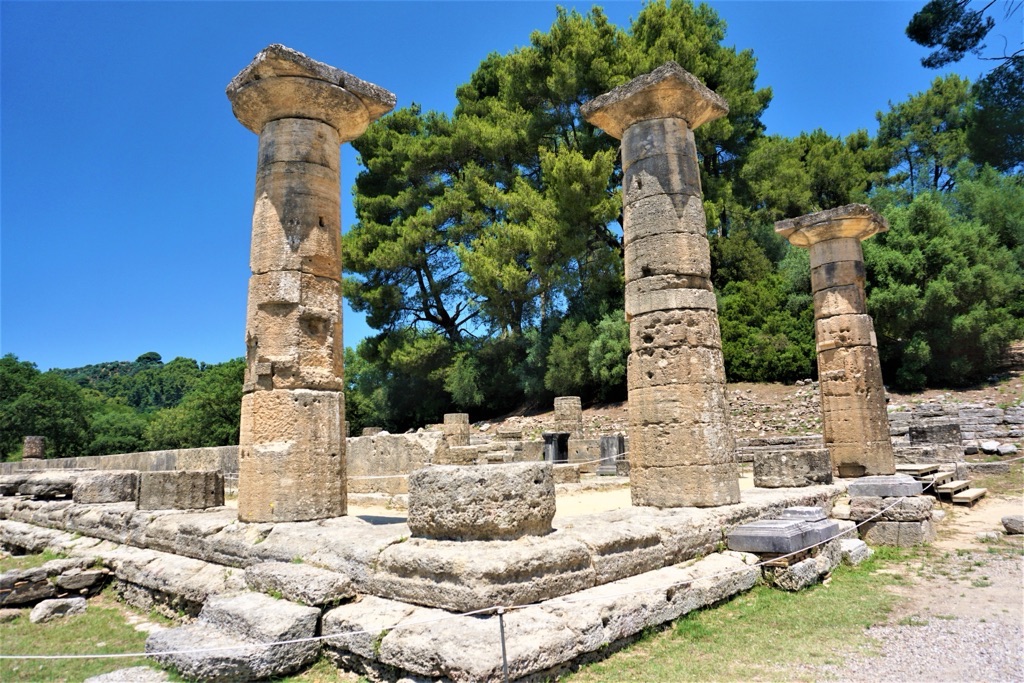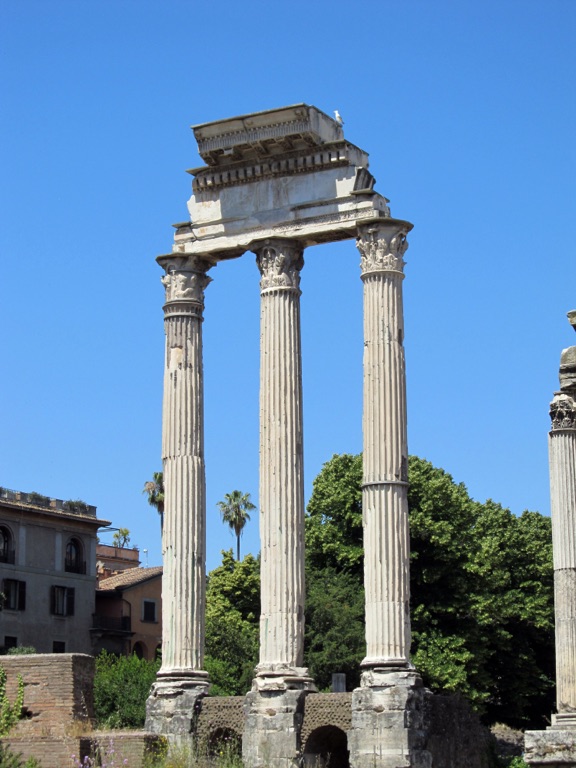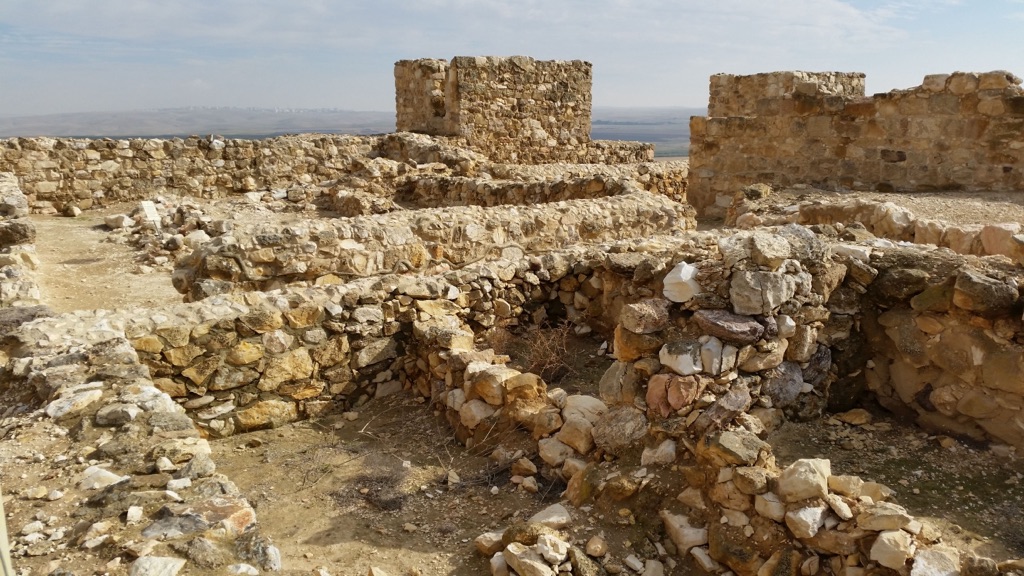Stepping into Tel Arad National Park is like walking back in time. This ancient site showcases the remnants of a Canaanite city and an Israelite fortress. Nestled in the heart of the Negev desert, the park offers breathtaking views. Visitors can explore the fascinating ruins, including the city’s gates, streets, and homes. The meticulously preserved temple stands out as a testament to detailed craftsmanship. This place is a must-visit for history buffs and adventure seekers alike, longing to experience a piece of Israel’s storied past.

Cave di Cusa
Cave di Cusa, also known as Rocche di Cusa, is a remarkable historical site in Sicily, Italy. This ancient stone quarry was the source of the limestone used to build the nearby Greek city of Selinunte, from the 6th to the 5th century BCE. Visitors to Cave di Cusa can witness stone columns in various stages of extraction and carving. Here, history is frozen in time, offering a unique window into the craftsmanship and building techniques of the ancient Greeks.

The Temple of Hera (Olympia)
The Temple of Hera, also known as Heraion, is an ancient temple located in Olympia, Greece. Constructed in the 7th century BC, it is one of the oldest monumental temples in Greece. The temple was dedicated to Hera, the wife of Zeus and one of the most important deities in Greek mythology. It was an integral part of the Olympia sanctuary, a religious and political meeting place that was the site of the Olympic Games. The Temple of Hera is an architectural marvel, showcasing the early development of the Doric order, one of the three orders of ancient Greek architecture.

Porta Maggiore
Porta Maggiore stands as a testament to Rome’s architectural grandeur and engineering mastery. Initially an aqueduct, this edifice was seamlessly incorporated into the city’s defense walls, symbolizing the empire’s resourcefulness. It captivates visitors with its imposing structure, intricate carvings, and the stories of a bygone era preserved in travertine stone.

The Temple of Castor and Pollux
The Temple of Castor and Pollux stands as a timeless emblem of ancient Rome’s enduring legacy. Nestled in the heart of the Roman Forum, this architectural marvel provides a remarkable window into Roman religion and society. Though only three Corinthian columns remain, the temple once signified reverence for the divine twins, Castor and Pollux, credited with aiding Rome’s victory in the Battle of Lake Regillus. Visitors and history enthusiasts alike can bask in the temple’s historical significance, with remnants that speak volumes about Roman construction methods, religious beliefs, and the social importance of such structures in public life. A visit to the temple offers an immersive experience, bridging the gap between the past and present, allowing one to step back into a world where mythology and reality intertwined.

The Sphinx of Tanis
Amidst the sands of Egypt, the Sphinx of Tanis intrigues historians and tourists alike with its enigmatic appeal. Not as renowned as its Giza counterpart, this Sphinx remains a mystery, its origins shrouded in the mists of time. Carved from a single slab of granite, it now resides in the Louvre Museum, captivating onlookers with its intricately carved features and regal bearing. Tales of its discovery in the Temple of Amun in Tanis whisk us to an era of pharaohs and grandeur, hinting at untold stories between the lines of hieroglyphs etched on its surface.

